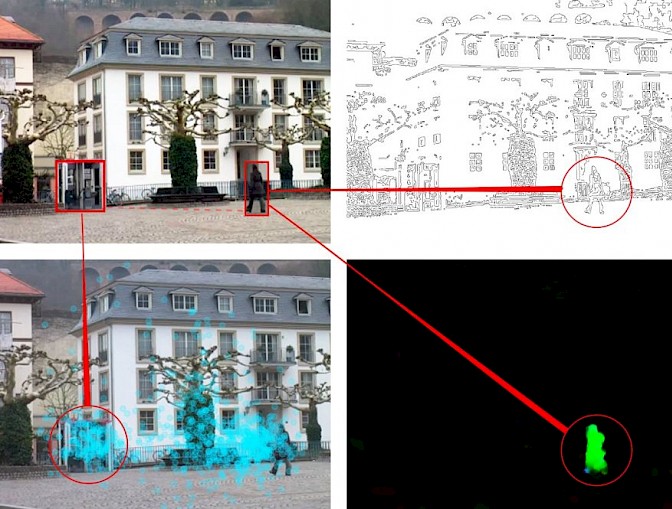Visual attention as a window to cognitive processing – A new method to analyze eye tracking data elicited from dynamic scenes
The goal of this project is to develop a new method for the analysis of eye tracking data, which can be used to investigate attention allocation patterns of humans who are presented with dynamic stimuli.
By combining existing methods from the field of automatic image processing and knowledge from psycholinguistic research, we first aimed at simplifying all steps necessary during the obligatory preparation of any data set which can be derived from the output of an eye tracking system: X and Y coordinates, which represent the position of a viewer’s eye at a given moment during the presentation of a dynamic stimulus need to be linked to the semantic content of the scene being presented. In quantitative eye tracking research this is achieved by defining so called ‘areas of interests’ (AOIs), which geometrically mark those regions in the stimuli that are expected to attract attention necessary during the visual information uptake by the human brain or which reflects any cognitive process that can be theoretically linked to the visual stimulus. Not only is this step necessary to make eye tracking data “meaningful” in the first place, it is also a pre-requisite to group and compare stimuli that – from a semantic point of view – share specific features. From the field of digital image processing we employ methods relevant for optical flow-based motion estimation and segmentation in order to detect dynamic scene elements, i.e., the moving entities, on the basis of the visual information in the stimulus. In order to segment stationary entities we use cluster algorithms to detect those areas on a stimulus that are frequently looked at during the stimulus presentation (other than the moving entity). Taken together, both methods automatize the definition of AOIs, which can be regarded as the first component of a totally automatic eye tracking data analysis software.

As a second step, we are now developing an automatic “scan procedure” that searches through the eye tracking data in order to detect potential patterns that emerge from a ranked cluster analysis. Some of the parameters in those analyses can be set freely and thus it is possible to estimate what cognitive factors contribute to what extent to human image processing under different experimental conditions. One of the aims of this technique is to assist the researcher in the initial phase of data exploration, though there are more applications, which we are now exploring. Both methods allow for the collection and analysis of large quantities of eye tracking data.
Further Information: Project page at IWR